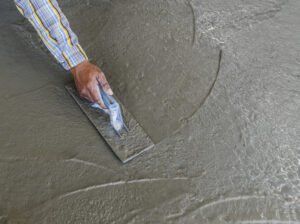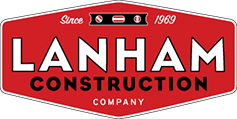
Here is a detailed guide that can walk you through everything you need to know about your customized concrete floor.
Flooring is an essential part of a home. The right floor makes a significant aesthetic impact. However, it also enhances your home’s functionality and practicality. Concrete flooring has increased in popularity over the past few years because it blends seamlessly with any décor or interior design scheme. Concrete is also a customizable material that you can mold into different shapes and finishes. Here is a detailed guide that can walk you through everything you need to know about concrete flooring.
The Pros of Concrete Flooring
- Durability: Concrete flooring is durable and resilient. While no material is indestructible, it takes a lot to damage concrete. Therefore, if you have concrete in your home, you won’t have to think about shoes, pets, or furniture pieces damaging the surface of your concrete floor.
- Sustainability: Additionally, concrete is an eco-friendly material. Most homes already have concrete subfloors beneath the current flooring material. If this is the case, all it takes is uninstalling anything placed over it. After that, all that’s left is to finish the top layer of whatever is already there. When you utilize a preexisting concrete slab, you avoid the need to add new materials.
- Cost-Effective: Concrete flooring is still cost-effective even if you can’t use what is already under your floor. Plain concrete slabs typically cost no more than $8 per square foot. It all depends on the thickness level you want. You can also upgrade your selections by choosing different tones and grid pattern lines or create a highly ornate marble effect with a larger budget. Concrete can even replicate natural stone. Regardless of your selection, concrete flooring is more affordable than tile or natural stone.
- Low-Maintenance and Longevity: When you hire professionals to install your concrete floor and adequately seal and polish concrete flooring, it can last up to 100 years, even in the harshest commercial settings. Wax and seal concrete floors every six to nine months and mop them with soapy water to keep them pristine. Another option to keep a concrete floor finished is installing a baseboard to ensure your mop doesn’t leave residue in the crevice where the floor meets the wall.
The Disadvantages
Concrete floors can be hard and cold during the winter months. However, you can address these concerns with area rugs. Also, it’s best not to install concrete floors yourself because professionals will ensure that your floor isn’t sensitive to moisture.
Where to Install a Concrete Floor
- Bathrooms: Concrete in a bathroom can make the room feel airier, more ethereal, and open due to its light texture.
- Office: A concrete floor installed in an office is synonymous with sophistication.
- Kitchens and dining rooms: Concrete in these areas provide a neutral palette, ensuring that you can design and accessorize these spaces how you see fit.
Contact Lanham Construction today whenever you’re ready for a beautiful concrete floor installed in your home.
Lanham Construction For All Your Construction Needs
Lanham Construction is an award-winning and dependable construction company dedicated to serving your home or business with whichever construction project you have in mind. Our professional team is eager to serve customers throughout Maryland, Virginia, and Washington D.C. When you pick Lanham, you won’t ever have to worry about the process. We’re here to help every step of the way.
